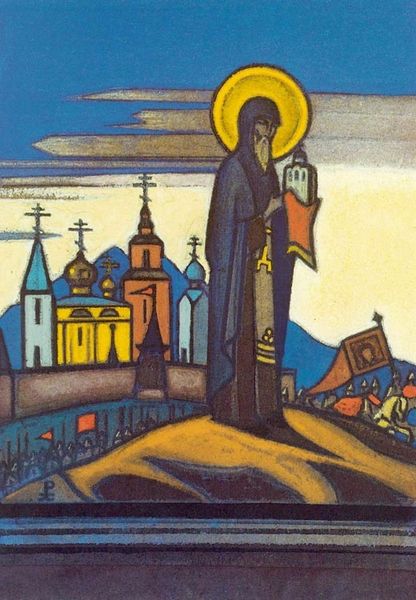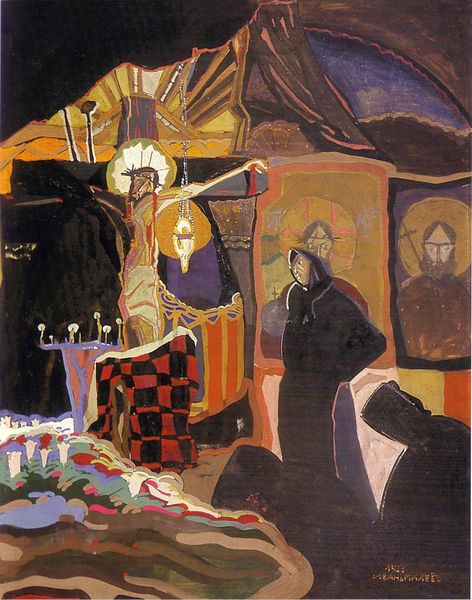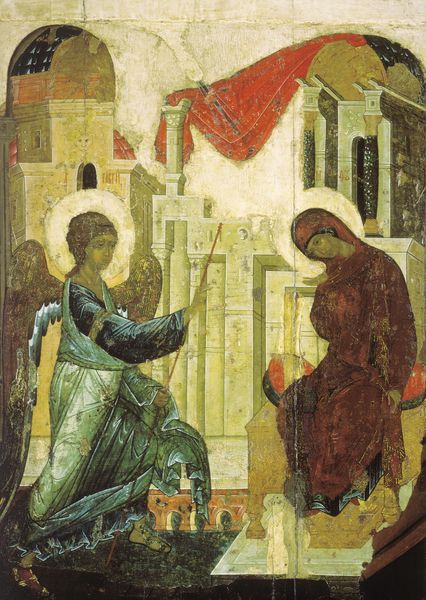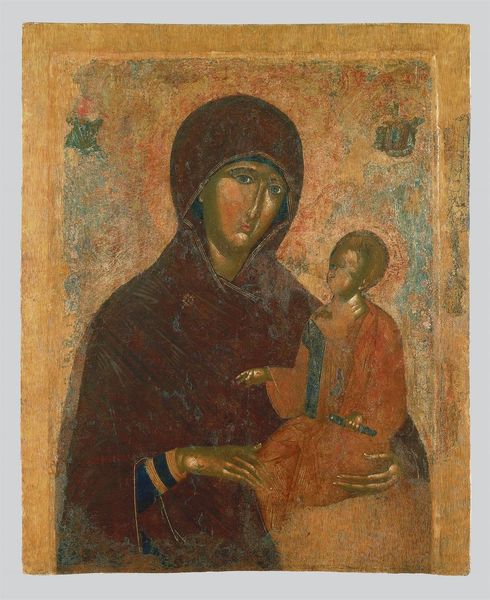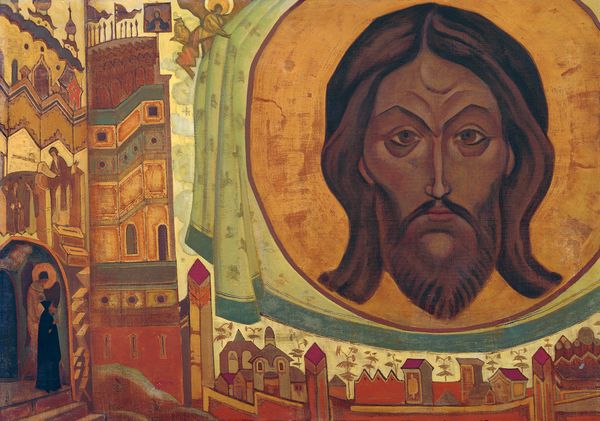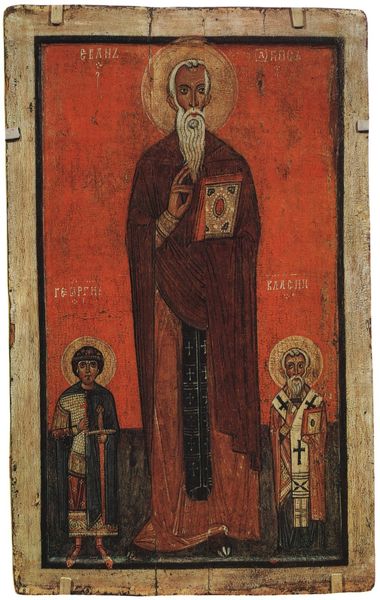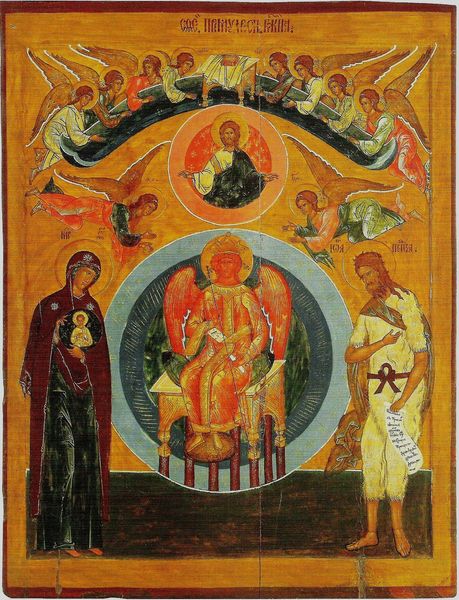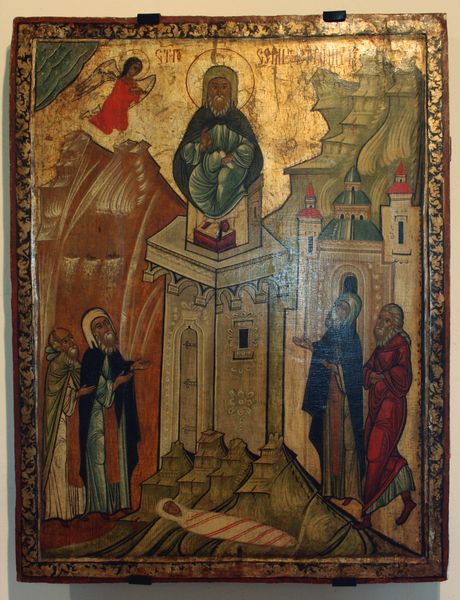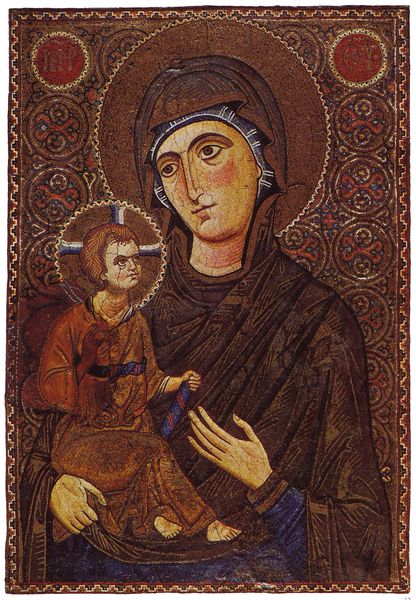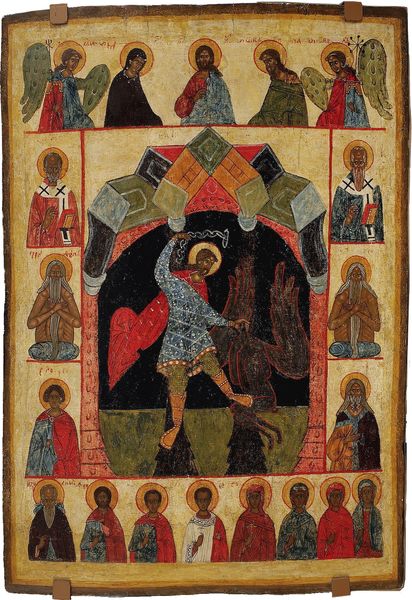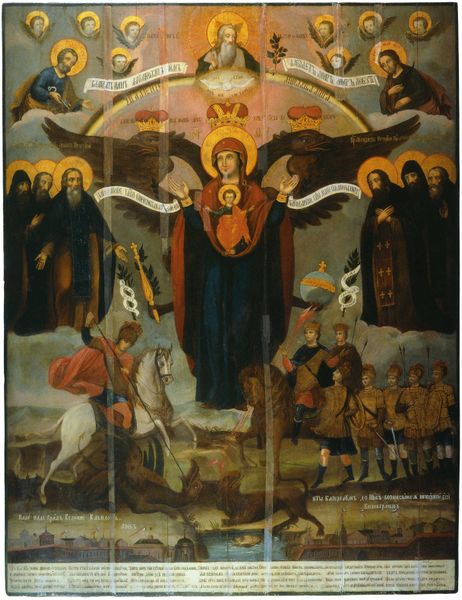
Copyright: Public domain
Editor: This is Nicholas Roerich's "Sergius of Radonezh," painted in tempera in 1932. I’m immediately struck by how the shapes are simplified and almost geometric, but it still manages to evoke a sense of the mystical. What compositional elements stand out to you? Curator: The painting presents a fascinating arrangement of forms. Observe the artist's meticulous selection and arrangement of these geometricized elements. Consider the concentric circles formed by the halo, echoed subtly in the depicted architectural details. Does this compositional choice generate a symbolic effect for you? Editor: It does create a sense of unity and focus, drawing the eye inward. How do you read the contrasting color palettes used in the depiction of the saint versus the buildings below? Curator: Note that the juxtaposition of vibrant, almost folkloric buildings set against the contemplative figure establishes a dialectical relationship within the pictorial space. It may seem arbitrary but is carefully balanced. This formal tension generates dynamic interpretations that the audience can unpack based on the interplay between line, color and composition. What are your own impressions? Editor: I think the vibrant colors in the buildings bring a grounded, earthly feel to the image, contrasting with the more muted tones surrounding Sergius, making him appear ethereal. Do you find any deeper meaning in Roerich's use of simple forms in combination with vibrant colors? Curator: Simplification encourages engagement, requiring the viewer to supply connections in their interpretation. Colors activate our retinas and stimulate diverse, and intensely personal connections and emotional responses. Through his visual syntax Roerich masterfully prompts viewers toward nuanced reflections on material, structural forms, and affective engagement. What key lessons or interpretations emerge for you, after our discourse? Editor: For me, I appreciate how analyzing composition, color and form independently can bring different layers of interpretation. Curator: Precisely. Visual art allows for myriad paths to create, examine and appreciate.
Comments
No comments
Be the first to comment and join the conversation on the ultimate creative platform.
